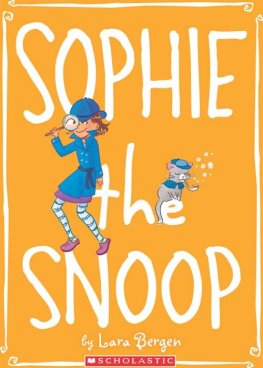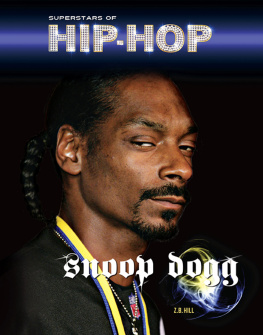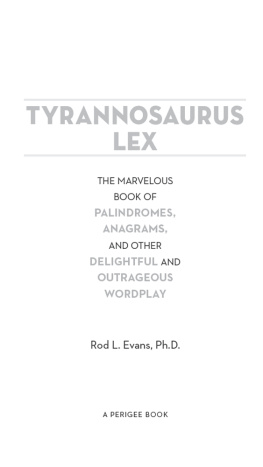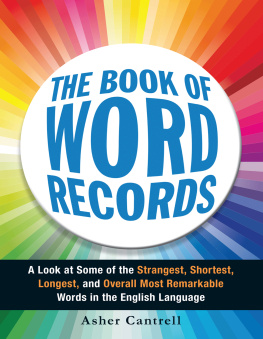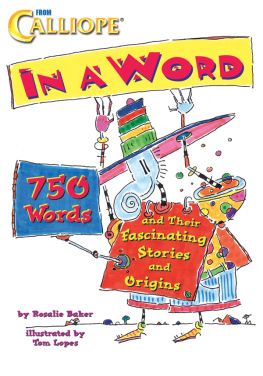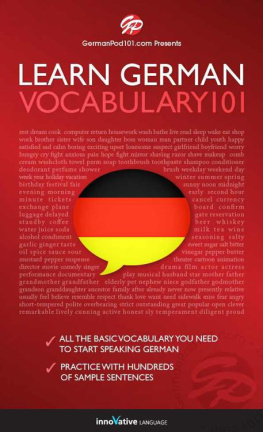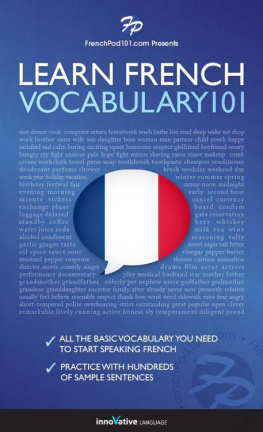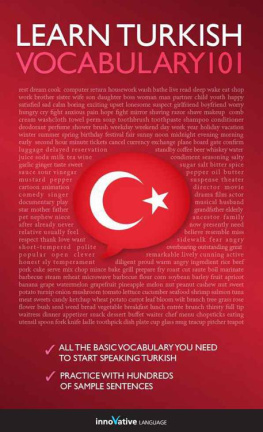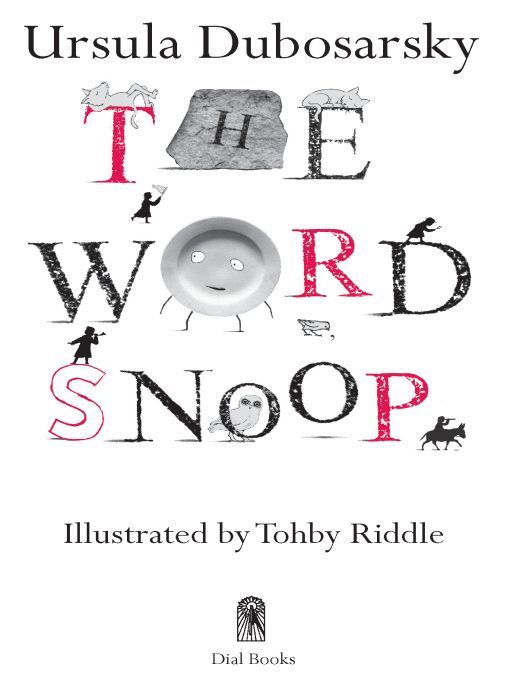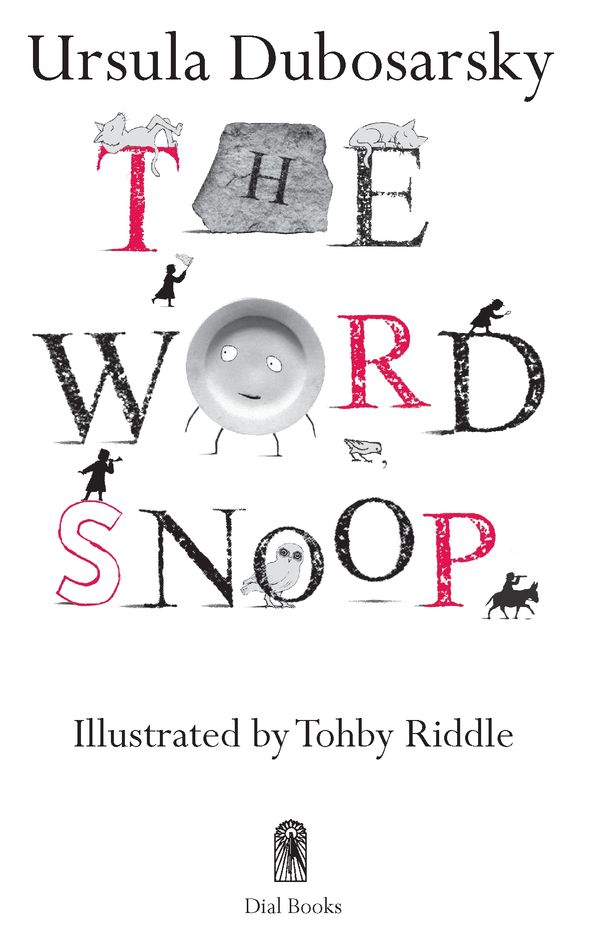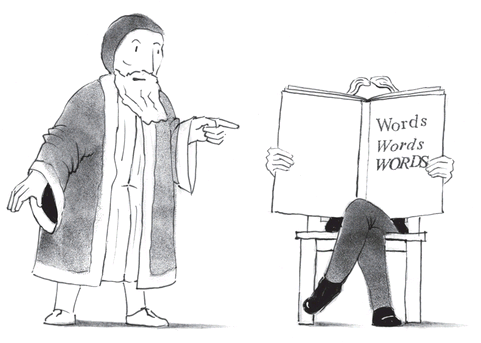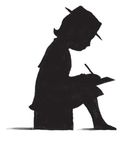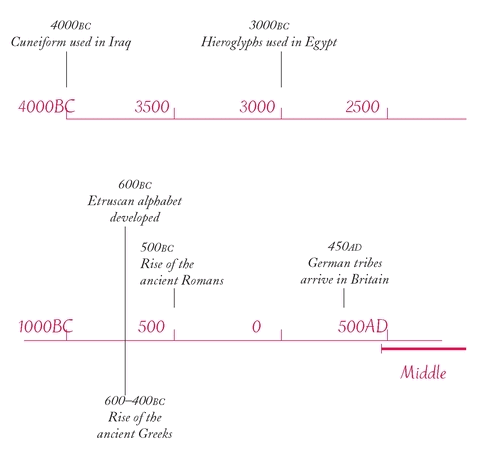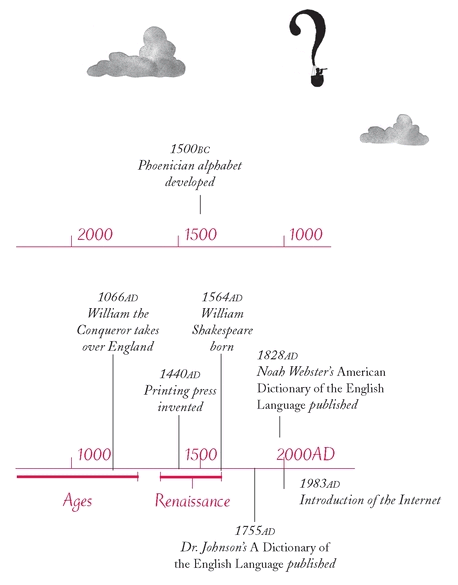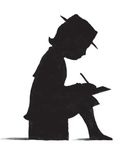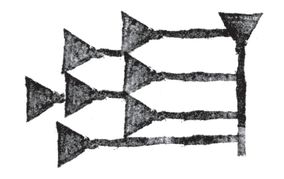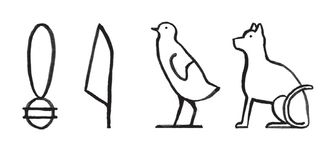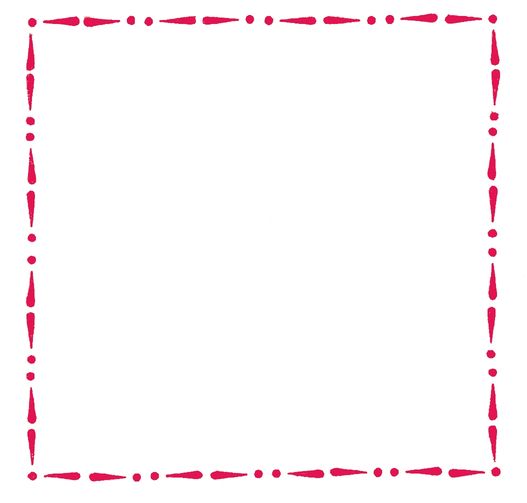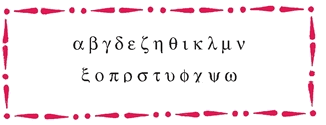Table of Contents
For everyone at
Ferncourt Public School,
in appreciation.
And to my dear friends and
colleagues at the New South Wales
School Magazine, where the Word Snoop
was born...
U.D.
For I.J.V.
T.R.
Polonius: What do you read, my lord?
Hamlet: Words, words, words.
HAMLET BY WILLIAM SHAKESPEARE
Dear Readers,
You may not know me, but I know you. I am
the WORD SNOOP!
The Word Snoop? Allow me to explain... You
see, I love words. Ever since I can remember, Ive
been listening to, speaking, reading, writing, and
yessnooping on words. I follow words every-
where. I creep down dark hallways, roam wide
highways, and sneak along country lanes.
I listen to conversations, read over peoples
shoulders, flip through books, click on
websites, and tap out text messages...
But the time has come at last for me to emerge
from undercover and share with you some of the
many, many things I have learned.
Why dont you come and be a Word Snoop with
me? All you have to do is open this book, take
a deep breath, and dive inside. The wonderful
world of words awaits!
But shhh! Someones coming! I cannot stay.
See you very soon, I hope. Dont delay, my
snoops, Im expecting you...
Bye-bye! Must fly!
Yours ever,
The Word Snoop
P.S. Oops, I almost forgot! Theres a secret
message for you hidden in the pages of this
book. You will find a part of the message at the
end of each chapter, and each part is written in
its own special code.
See if you can decipher them all.
Farewell, my snoops... and good luck!
Timeline
Dear Snoops,
Im writing to you from a secret location. Dont
tell anyone where I am, okay? Oh, thats right,
you dont actually know where I amdo you?
Anyway, one thing you do know is your ABCs.
Thats right, the alphabet. Now, maybe the
alphabet sounds like a pretty ordinary thing to
you, but actually its not. The only way you are
able to read this book, or have it read to you, is
because of the invention thousands of years ago
of that mysterious thing we call
The Alphabet.
Its funny, when something is as familiar as
the alphabet you would think it had been there
since the beginning of time. But it hasnt...
Read on, my friends!
And remember, keep snooping.
Your abecedarian friend,
The Word Snoop
How it all began...
The First Alphabet
Imagine yourself back when you were learning the alphabet for the very first time. Twenty-six different lettersyou probably thought youd never be able to remember them all. But have you ever wondered where those strange shapes came from in the first place?
The very earliest writing in the world started in the area now known as Iraq in about 4000 BC. Its called cuneiform, which means wedge-shaped. You know when you play with putty or clay, and you dig your fingernails into it to make shapes? Cuneiform was a bit like thatit was a way of writing by pressing wedges into soft clay to make signs for words and sounds. It looked like this:
In ancient Egypt they did something a bit different. They carved or drew little pictures to show sounds or ideas. This kind of writing is called hieroglyphs, which means holy writing because it was mostly used by priests. Heres an example of a hieroglyph:
Can you guess what the word means? (Ill give you a hintlook at the very last picture. Meow!)
But neither cuneiform nor hieroglyphs were really alphabets. In an alphabet like ours, the signs or letters are supposed to stand only for sounds. To write the word cat, we use three letters to show those three sounds: c a t. But in writing systems like cuneiform and hieroglyphs, only some of the signs stood for sounds, while others stood for ideas or whole words, and sometimes these were combined (like the word for cat abovethe first three pictures stand for sounds, while the last picture sums up the whole word). That sort of writing is a lot more complicated to write and to remember than an alphabetin cuneiform alone there were about 1,500 different combinations!
The Phoenicians, who lived north of Egypt as far up as modern-day Lebanon and Syria, are said to be the first people who used an actual alphabet. It looked like this:
The first two letters of the Phoenician alphabet were called aleph and beth. (Get it? Aleph-bethAlphabet!) There were 22 letters, all consonants. Ys, thts rght, jst cnsnnts... The first letter, aleph, was not actually an A as we know it, but a funny sort of glugging sound in the throat. (Okay, you can stop glugging now.)
Anyway, because it made life simpler and writing quicker and easier, the Phoenician alphabet started to catch on, glug and all. The ancient Hebrew alphabet that most of the Bible was first written in is based on the Phoenician alphabet. The ancient Greeks adopted it too, adding extra letters for the vowels in around 1000 BC. (Phw! Tht ws lcky!) This is what the Greek alphabet looked like:
This alphabet eventually turned into the alphabet for Russian, Bulgarian, and other languages in that part of the world. In Italy, though, the Greek alphabet was adapted by the Etruscans, an amazing ancient people who lived in Italy before even the Romans did. This is how the Etruscans wrote their letters. (Are some of these starting to look familiar?)


